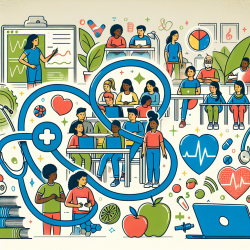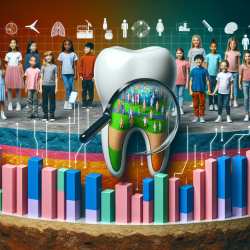The Hidden Health Benefits of Secondary Education
In a groundbreaking study published in SSM - Population Health, researchers Viner et al. (2016) explored the profound impact of secondary education on health outcomes across 186 countries from 1990 to 2013. This extensive analysis sheds light on how secondary education can act as a "social vaccine," providing substantial health benefits, particularly in low- and middle-income countries.
Key Findings
The study revealed that each additional year of secondary education leads to:
- An 8.4% reduction in adolescent fertility rates (AFR) in mixed effects models, and 14.6% in inverse probability weighting (IPW) models.
- A 16.9% reduction in mortality for young women aged 15-19, and 14.8% for those aged 20-24.
- A 24.5% reduction in HIV prevalence among young men and a 43.1% reduction among young women.
These findings highlight the greater health benefits of secondary education compared to primary education, with the most significant impacts observed in young women and low-income countries.
Implications for Practitioners
For practitioners, especially those involved in online therapy services like TinyEYE, these findings underscore the importance of integrating educational support into therapeutic interventions. Here are some actionable steps:
- Advocate for Education: Encourage families and communities to prioritize secondary education, emphasizing its health benefits.
- Collaborate with Schools: Partner with educational institutions to provide resources and support that facilitate students' continued education.
- Tailor Interventions: Develop interventions that address the unique challenges faced by adolescents, especially in low-income settings, to maximize educational and health outcomes.
Encouraging Further Research
While the study provides robust evidence of the health benefits of secondary education, further research is needed to explore the mechanisms behind these benefits. Practitioners are encouraged to contribute to this growing body of research by:
- Conducting Longitudinal Studies: Examine the long-term health impacts of secondary education in various cultural and economic contexts.
- Exploring Causal Pathways: Investigate how secondary education influences health behaviors and outcomes.
- Evaluating Interventions: Assess the effectiveness of educational interventions in improving health outcomes among adolescents.
Conclusion
The research by Viner et al. (2016) highlights the transformative power of secondary education on health outcomes. As practitioners, leveraging this knowledge can lead to more effective interventions and better health outcomes for adolescents. Investing in secondary education is not just an educational priority but a critical health strategy.
To read the original research paper, please follow this link: The health benefits of secondary education in adolescents and young adults: An international analysis in 186 low-, middle- and high-income countries from 1990 to 2013.










